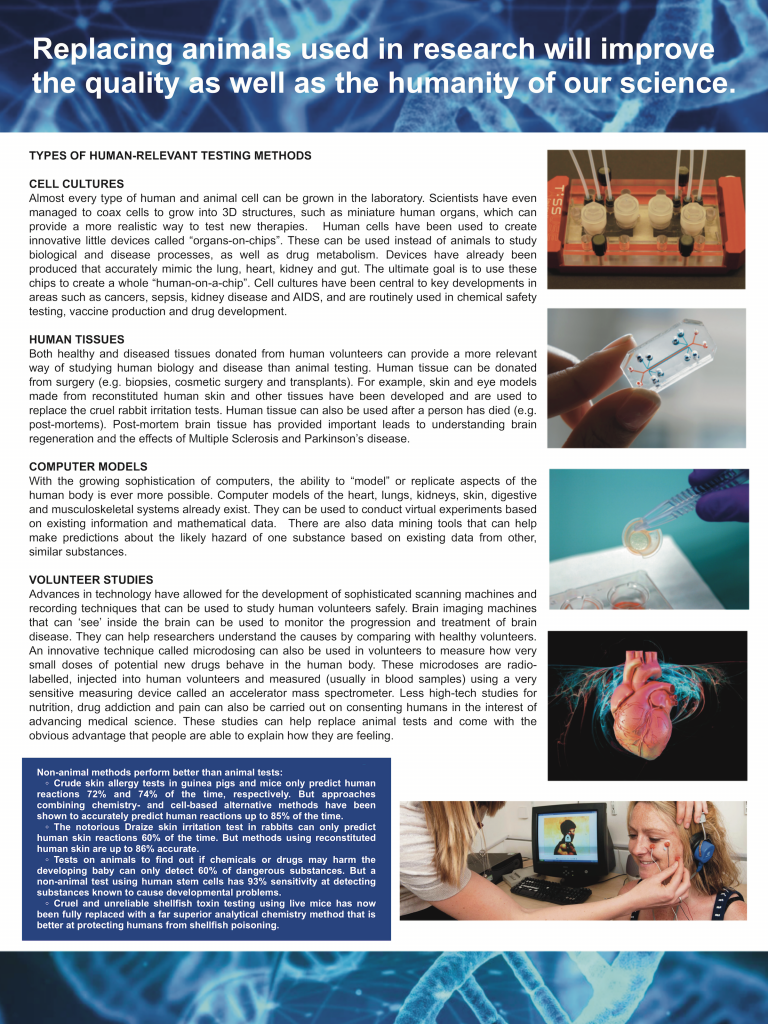
The real benchmarks of medical progress have relied on non-animal methodologies, as published academic studies have confirmed. These methods include:
- In vitro (test tube) research which has been instrumental in many of the biggest discoveries, including antibiotics, the structure of DNA, as well as all of the vaccines we have today, such as those that protect against polio and meningitis.
- Epidemiology (population research) which has included such important revelations as the fact that folic acid deficiency causes birth defects, smoking causes lung cancer and that heavy metal lead damages children’s brains.
- Post-mortem studies are responsible for much of our modern medical knowledge – including the repair of congenital heart defects in babies.
- Genetic research has elucidated how certain genes are responsible for some diseases. DNA chips allow doctors to prescribe the right drug for specific patients, thus reducing serious side effects of chemotherapy, for example.
- Clinical studies of patients have provided most of our current treatments and cures – including our treatments of lazy eye and the knowledge that HIV transmission from mother to baby can be prevented.
- Human tissue is vital in the study of human disease and drug testing – animal tissues differ in crucial ways.
- Computer modeling is now very sophisticated, with virtual human organs and virtual metabolism programs that predict drug effects in humans far more accurately than animals can.
- Advances in technology are largely responsible for the high standard of medical care we receive today, including MRI and PET scanners, ultrasound, laser surgery, cochlear implants, laparascopic surgery, artificial organs, microfluidic circuits, microdosing, pacemakers and even surgery to correct spina bifida in the womb.
- Human stem cells have already treated children with leukemia and promise to deliver great benefits in the future.
Please view our blog posts under the category “Valid Science” to read more about the most recent advances in humane research and testing methods.
The film, The Medical Illusion, by Gary Charbonneau, is a Canadian film that illustrates the limitations of animal models in medical research and also discusses more modern and reliable alternatives:
Also watch the 26 minute documentary ‘Safer Medicines’ below, a film by ElstreeDV. Safer Medicines Trust (formerly Europeans for Medical Progress Trust) showcases state-of-the-art approaches for ensuring that drugs in the future will be safer than they have been in the past. See world-leading scientists present their vision for the future of drug safety testing, including microdosing, human tissues, gene chips and computer models – all with a focus on human biology.
